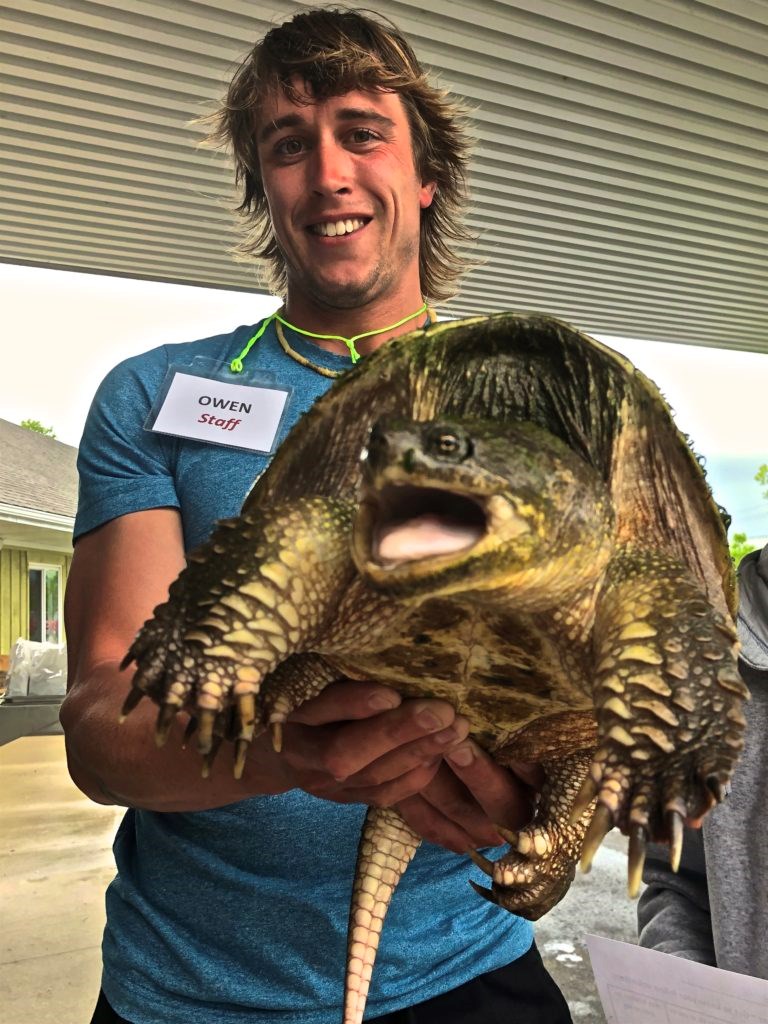
There are so many patterns in nature that are marvelously predictable. In a chronological order of events, the first half of June is snapping turtle sighting season.
When you see Ontario’s largest freshwater turtle crossing the road like an archaic dinosaur, it is a sight to behold.
The sighting has inherent importance because it can save the turtle’s life.
At this time of year, snapping turtles are on the move out in the open in bigger numbers. This window of time creates a spike in road encounters. What you’re most likely seeing are females on the crawl, looking for suitable nesting sites.
A candidate piece of real estate for a turtle to deposit 20-plus eggs in the ground needs to be a safe bet. It needs soft material to dig into, using powerful back legs to furrow out a hole. Sand, soft soil, mulch, and fine dirt are all easy and ideal materials to push aside and protect the eggs properly. The soil also needs to drain well. It’s no wonder that these turtles are often turning up on the sides of our rural roads, on those soft shoulders with gravel and loose dirt.
Cruising along the lines and concessions, I typically move five or so of these off the road every year. I usually help them across the road in the direction they’re heading, as these turtles are incredibly homed in on certain directional and environmental cues.
I’ve seen them picked up, rotated and placed toward the other side of the road — and
they then begin marching back in the exact same direction like a zombie.
This insatiable drive causes turtles to push like steamrollers through tall grasses and under fences, as they follow their innate senses to the perfect
nest area.
They are on a mission, and unfortunately, the mission can literally end at the roadside pretty quickly. That, and habitat loss, are the leading sustained threats to snapping turtles.
I seem to be spending more time with turtles these days, as they are showing up in front of me in NOTL, other towns, and at work at Heartland Forest in Niagara Falls. It’s that time of year, and I always find it exciting because there is not only an opportunity to see something interesting, but also a chance to educate.
We had a snapping turtle laying her eggs in the mulch of our kids’ play area at Heartland Forest this week. She was half dug into the earth, wearing a laughable “hat” of mulch. We put pylons in a perimeter around her, and she successfully laid and buried her eggs while kids looked on.
Later the same day, a man driving by the building pulled in just to notify us he spotted a huge snapping turtle crossing the middle of the road. He didn’t want to see it squashed, and neither did I. So I ran out to the road.
Suddenly, in front of me was a picture worth a thousand words. Where a forested patch of swamp existed a month ago, there is now a massive heap of dirt and turned over soil. Ironically, this is likely an attractive type of substrate to lay eggs on. Only the snapping turtle wasn’t aware that tomorrow, the construction and land-moving crew would be back.
I couldn’t imagine this female turtle, who is most likely pregnant, going out into that environmental scar only to have her body or her eggs smushed days later. It really paints a picture.
She was carried back to our side of the road, deeper into our area of protected wetlands. It is quite possible she may find herself back on the other side of the road where she was determined to lay her eggs.
If you see one of these large, brown, spiky reptilians inching their way across the road, the best thing is to slow down and go around. The next best thing to do, if you are confident in doing so, is to move the turtle in the direction it is heading (providing that site isn’t destined to be squished the next day). You can do this by picking the turtle up from behind with two hands, or using a boot or shovel to “shoo” it along gently.
Watch out for the snap, but also take note of how beautiful their eyes are. You won’t be disappointed — just don’t look too closely.